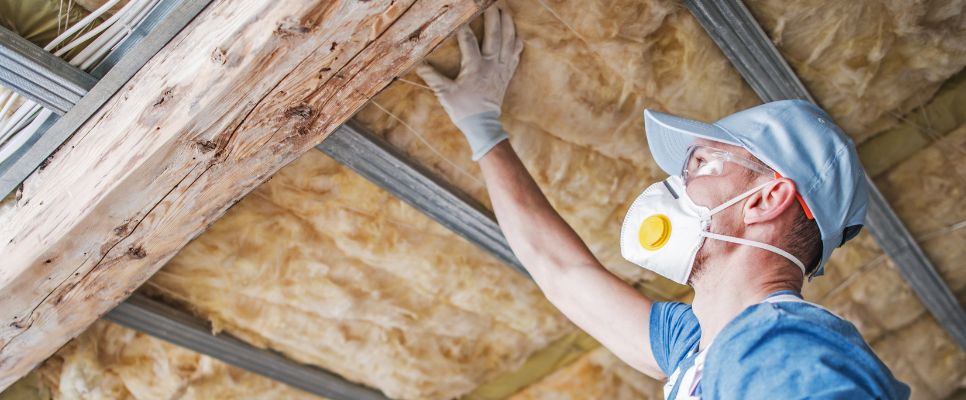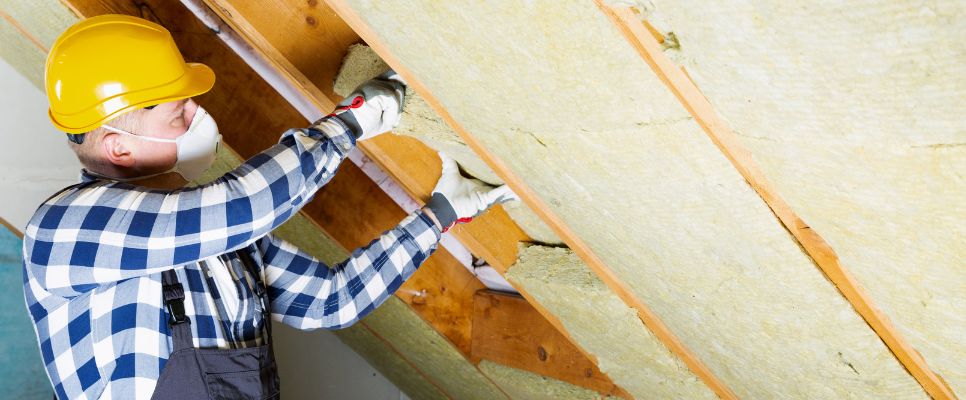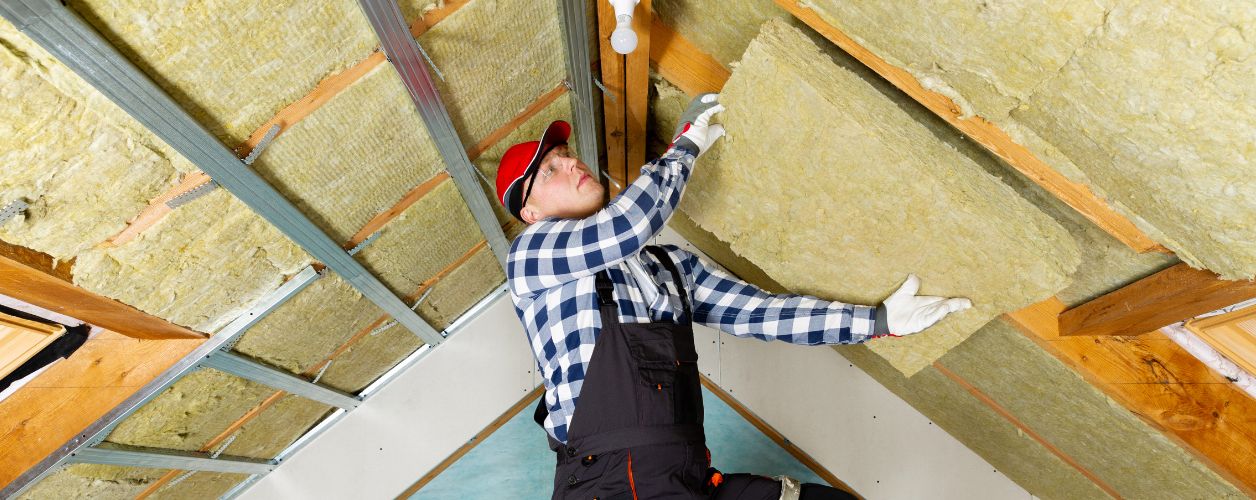How Much Does Roof Insulation Cost? Price to Install Insulation Explained
Australian homeowners obtain the greatest return on investment by installing proper roof insulation. Meaningful features of roof insulation include creating year-round temperature comfort, lowering utility bills and greenhouse gas emissions, and raising property value during sales. The roof insulation cost homeowners in Australia $1,000 to $2,500.
This detailed cost guide provides essential information about roof insulation pricing as well as explanations regarding available insulation types and material and labour costs, and house size factors, along with DIY recommendations versus professional installation guidance. Anyone who wants to install roof insulation for a remodel or new home construction project, or to replace current insulation systems, can get useful insights.
Why Roof Insulation Is Essential in Australia
Australia experiences two extreme weather conditions, which include cold Tasmanian winters and Snowy Mountain frost, followed by scorching summer temperatures across Western Queensland and Northern Territory regions. Every Australian neighbourhood benefits from roof insulation because it maintains home comfort, along with reduced utility expenses.
The roof constitutes a significant part of home insulation because it permits approximately 35% heat entry or exit when left uninsulated. The loss or gain through the roof amounts to a significant portion of your heating or cooling system consumption.
Benefits of roof insulation include:
- Roof insulation stops excess heat from entering the home in summer months, as well as keeps interior warmth from escaping during winter.
- Adding roof insulation allows you to decrease both cooling and heating operations, thereby saving energy.
- Lower power bills, saving money on electricity and gas, year after year.
- It reduces your home’s carbon footprint.
- Acoustic insulation acts to minimise external noises, particularly those from water and vehicles.
- Today's house seekers prefer properties that save energy, insulated properties gain extra value.
Average Roof Insulation Costs
Roof insulation installation normally ranges between $1,200 and $5,000, except for when multiple key elements affect the final price. The total costs of roof insulation depend on the insulation type, as well as materials used and labour rates and house dimensions and roof complexity levels.

Bulk Insulation (Batts)
Cost range: $8 – $20 per m²
Typical cost for 100m² roof: $800 – $2,000
The widespread and cost-efficient insulation material known as bulk insulation consists of glass wool, polyester or rockwool. People with average skills and experience can install this insulation, which comes in batts or rolls. A professional installation company will achieve better installation outcomes, particularly when dealing with spaces that are difficult to access.
Reflective Foil Insulation (Sarking)
Cost range: $6 – $14 per m²
Typical cost for 100m² roof: $600 – $1,400
Household insulation through reflection works across hot Australian zones, thus making it an excellent choice for homeowners in these regions. Builders install reflective foil insulation as an underlayer during new constructions or major remodelling of metal and tiled roofs. The cheaper installation price of this material enables better value, but proper setup and ventilation determine its performance.
Spray Foam Insulation
Cost range: $40 – $90 per m²
Typical cost for 100m² roof: $4,000 – $9,000
Spray foam insulation provides maximum thermal resistance through its ability to seal cracks and gaps extremely well compared to any other insulation solution. The superior performance requires customers to pay higher prices. Professional equipment operated by trained specialists is needed to apply spray foam insulation since home installation is not possible. Spray foam insulation proves to be a durable and high-performance solution because it produces significant long-term savings on energy costs.
Blown-In Insulation (Cellulose or Wool)
Cost range: $20 – $40 per m²
Typical cost for 100m² roof: $2,000 – $4,000
Professional grading experts should utilise blown-in insulation to achieve perfect insulation coverage in intricate or hard-to-access roofing areas. The insulation product consists mainly of recycled cellulose and treated wool fibres. The installation requires special tools for proper distribution, which makes it suitable for older buildings when complete reconstruction is impossible.
Detailed Breakdown of Insulation Types
Bulk Insulation (Batts and Rolls)
The usage of Bulk insulation stands as the primary choice for Australians. This material structure makes air trapping possible to reduce heat transfer between areas. The insulation material exists in two formats as pre-cut batts or long rolls.
Common materials:
Fibreglass (glasswool) – popular, affordable, fire-resistant.
Polyester represents a kind of insulation that maintains its soft touch while causing no irritations and works best for households dealing with allergies.
- Rockwool – ideal for both thermal and acoustic insulation.
- Wool – natural, sustainable, but more expensive.
Typical cost:
- DIY materials only: $5 – $10 per m²
- Professionally installed: $8 – $20 per m²
The installation of bulk insulation batts leads to the lowest costs for ceiling spaces that have convenient accessibility. A 3-bedroom house costs about $1,500, whereas a 4- to 5-bedroom house usually reaches $3,500.
Reflective Foil Insulation (Sarking)
Radiant heat finds its reflection through reflective foil insulation instead of being absorbed. People commonly use this material under metal structures and in hot areas that focus mainly on heat management.
Builders install reflective foil during new construction or when replacing roofs, yet professionals can add it to existing properties when needed.
Typical cost:
- Materials only: $3 – $8 per m²
- Installed: $6 – $14 per m²
By merging foil with batts, the insulation performance reaches better levels, which satisfy more demanding R-value regulations.
Spray Foam Insulation
Spray foam insulation exists as a liquid substance that expands while hardening into a tight compressed block. The product features advanced insulation together with superior air sealing functionality, although it demands a higher price point.
Two types:
- The open-cell type offers better soundproofing characteristics with lower density and reduced expense.
- Closed-cell – Denser, moisture-resistant, higher R-value.
Typical cost:
- Installed only: $40 – $90 per m²
Professional personnel using this method need to perform the application since the approach comes with the highest costs. The extensive application of this insulation occurs when reaching places that are not easily accessible, as well as in environmentally friendly home construction and buildings requiring heightened performance standards.
Blown-In Insulation
Professionals use loose-fill materials, including cellulose and fibreglass, to blow into ceiling cavities, thus creating uniform thermal layers.
This insulation solution provides the best benefits when used for improving existing insulation or enhancing its thickness.
Typical cost:
- Installed only: $20 – $40 per m²
Blown-in insulation serves to insulate tricky areas such as corners, along with eaves and related roof spaces with irregular designs.
Factors That Influence Roof Insulation Costs
The overall project cost for roof insulation depends on various important aspects. The following details the cost-influencing factors of insulation budgets.
- Roof Size and Shape
The price for roof insulation increases directly with the size of the roof surface. The extension of the installation area leads to higher costs due to extra materials needed and extended labour work, as well as logistical complexities. Size continues to be significant, but roof shape plays an equivalent role in determining the overall cost. Insulating straightforward flat or gable roofs remains a basic task for installer teams.
- Material Choice
The total cost of your insulation project will depend heavily on your selected insulation material. The installation of spray foam brings the highest price tag because of its exceptional thermal benefits and its superb capacity to seal up air gaps. Fibreglass and polyester batts exist as cost-effective insulation options, although they do not provide any sealing properties. Spray foam and other forms of insulation should be used with reflective foil for maximum seasonal efficiency.
- Access Difficulty
Installing insulation becomes more difficult when roof cavities are tight or contain clutter, along with poor ventilation. The availability to work becomes restricted because of which the installation time and additional security measures could be needed.
- Labour Costs
Australian insulation installers cost between $40 and $80 each hour, according to your geographical area. Insulation installation rates stay at their lowest points when urban areas face significant competition. The cost of insulation installation goes up in regional and remote locations because contractors are scarce, and travelling to those locations adds extra charges.
- Removal of Old Insulation
The installation process of new insulation begins after removing any existing insulation that shows damage or deterioration. The removal process becomes essential for materials that show water damage, the presence of pests, or contain asbestos. Material quality and condition determine the price of removal services, which generally fall within $10 to $30 per square metre.

Cost Estimates by House Size
The total cost of your property insulation depends heavily on your home's dimensions and its dimensions. The installation of insulation materials takes longer for larger roof structures due to increased requirements for materials. Typical house sizes lead to these expected costs according to the dimensions.
1-Bedroom Unit (Around 60m² Roof)
Small residential units, along with granny flats, come with affordable insulation options. Unrolled insulated products, such as fibreglass or polyester, form the basis for installation. Cheap installation methods enable the quick setup of these materials. When you include installation costs, the total amount you will pay for insulation ranges from $700 up to $1,200.
3-Bedroom Single-Storey Home (Around 120m² Roof)
The majority of family residences throughout Australia belong to this classification. Using batts together with foil insulation proves effective for this situation. The insulation system both reflects summer heat from outside and creates insulation during winter. The prices for roof insulation installation for such roofing areas fall between $1800 to $3000.
4-Bedroom Two-Storey Home (Around 200m² Roof)
The installation cost of insulation increases proportionally with home size, specifically because of complicated roof shapes. Most households decide to use spray foam insulation because they want superior performance. It also helps seal air leaks. The total investment for spray foam insulation amounts to between $8,000 to $14,000, which incorporates labour expenses.
DIY or Professional Installation
DIY Installation
If your house is easy to access and you’re using batts, the savings when you do the work yourself can be hundreds of dollars.
Pros:
- Save on labour
- Flexible timeline
- Learn a new skill
Cons:
- Time-consuming
- Risk of installation in the wrong place
- Safety hazards (wiring, falling) and getting caught in it.
Professional Installation
You should probably hire a pro for:
- Spray foam
- Foil insulation
- Difficult roof access
- Adherence to building standards
You might expect to pay: $500 to $2,000 more for professional installation to install a system, depending on the size and scope of the job.
Choosing the Right Installer
- Contact 2–3 Local Installers to provide quotes
- They should be licensed and insured
- Ask about the type of insulation used, the R-value, and the warranty.
- Check reviews or testimonials
- Also, ask if they do insulation removal
Signs It’s Time to Replace Your Roof Insulation
- Cold drafts/Hot spots in your home
- Unusually high energy bills
- In-ceiling condensation or wetness.
- Temperature differences from room to room are visible
- It has been 15–20 or more years since your Insulation was last installed
- The current insulation is deteriorating or uneven
Conclusion
Although the upfront cost of roof insulation might run anywhere from $1,200 to upward of $10,000, depending on your configuration, the long-term advantages make it one of the most cost-effective home improvements out there.
You’ll keep hundreds or thousands of dollars in energy costs in your pocket over the years, make your home more comfortable through both summers and winters, and minimise your environmental impact in the process. Roof insulation is also a must when it comes to noise reduction. It enhances the quality of your indoor air and can help prolong the life span of your heating and cooling appliances by making them work more efficiently.
With the possibility of government rebates, higher EERs and a higher property value, insulation isn’t only a smart investment, it’s a sensible one too, for a more sustainable home.








